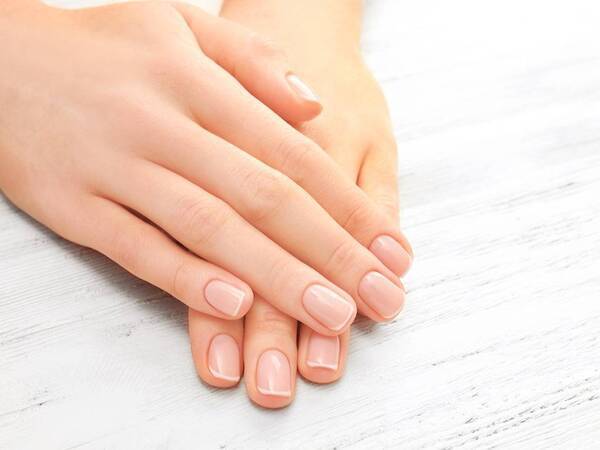Nails are not just accessories to be painted and adorned; they serve as indicators of overall health and wellness. Whether you prefer them short and natural or long and polished, maintaining optimal nail health is essential for both aesthetic appeal and functional well-being. In this comprehensive guide, we delve into the fundamentals of nail care, exploring the anatomy of nails, common nail concerns, and practical tips for keeping your tips in top shape.
- Understanding the Anatomy of Nails:
Nails, composed of a protein called keratin, are complex structures that protect the fingertips and aid in manual dexterity. Each nail consists of several parts, including the nail plate, nail bed, cuticle, nail matrix, and lunula (the white half-moon at the base of the nail). Understanding the anatomy of nails provides insight into their growth patterns, susceptibility to damage, and overall health.
- Practicing Proper Nail Hygiene:
Maintaining good nail hygiene is the foundation of healthy nails. Start by keeping nails clean and dry, regularly washing them with mild soap and water to remove dirt and bacteria. Use a soft-bristled nail brush to gently scrub underneath nails and along the nail margins. Trim nails straight across with sharp, clean clippers to prevent ingrown nails and fungal infections. Avoid biting or picking at nails, as these habits can damage the nail bed and lead to infections.
- Moisturizing and Protecting Cuticles:
Cuticles serve as a barrier that prevents bacteria and fungi from entering the nail bed. To keep cuticles healthy and supple, moisturize them regularly with cuticle oil or cream. Gently push back cuticles using a wooden or rubber cuticle pusher after showering when they are soft. Avoid cutting or trimming cuticles excessively, as this can increase the risk of infection and inflammation.
- Nourishing Nails from the Inside Out:
Nutrition plays a crucial role in nail health, as deficiencies in certain vitamins and minerals can manifest as brittle, weak nails. Incorporate foods rich in biotin, vitamin E, iron, zinc, and protein into your diet to promote strong, healthy nails. Foods such as eggs, nuts, leafy greens, lean meats, and legumes provide essential nutrients that support nail growth and strength. Additionally, staying hydrated by drinking plenty of water helps keep nails hydrated and prevents them from becoming dry and brittle.
- Protecting Nails from Environmental Stressors:
Nails are susceptible to damage from exposure to harsh chemicals, prolonged moisture, and physical trauma. Wear gloves when cleaning or doing dishes to protect nails from exposure to harsh detergents and chemicals. Avoid using nails as tools for opening packages or scratching surfaces, as this can lead to chipping, splitting, or breakage. Apply a protective base coat before applying nail polish to minimize staining and shield nails from the drying effects of polish remover.
- Choosing Nail Care Products Wisely:
Selecting high-quality nail care products is essential for maintaining healthy nails. Opt for nail polishes and removers that are free from harsh chemicals such as formaldehyde, toluene, and dibutyl phthalate (DBP), which can weaken and damage nails over time. Consider using nail strengtheners or treatments containing ingredients like keratin, calcium, and vitamin B5 to fortify nails and promote growth. When getting professional manicures or pedicures, ensure that tools and equipment are properly sanitized to reduce the risk of infections.
- Practicing Safe Nail Extensions and Artificial Nails:
While nail extensions and artificial nails can enhance the appearance of nails, improper application or removal can cause significant damage. Choose a reputable salon with trained technicians who follow proper hygiene and safety protocols. Avoid frequent use of nail extensions or artificial nails, as prolonged wear can weaken natural nails and increase the risk of fungal infections. Give nails a break between treatments to allow them to breathe and recover.
- Recognizing Signs of Nail Problems:
Nails can serve as indicators of underlying health conditions, with changes in color, texture, or shape often signaling potential issues. Be vigilant for signs of nail problems such as discoloration, ridges, brittleness, thickening, or separation from the nail bed. These may indicate nutrient deficiencies, fungal infections, psoriasis, eczema, or other health concerns that warrant attention from a healthcare professional. Prompt diagnosis and treatment can help prevent further damage and promote nail recovery.
- Seeking Professional Care When Needed:
Regular visits to a dermatologist or nail care specialist can help address persistent nail concerns and ensure optimal nail health. Dermatologists can diagnose and treat various nail disorders, prescribe medications or topical treatments, and provide personalized recommendations for maintaining healthy nails. If you experience chronic nail problems or have concerns about the appearance or health of your nails, don’t hesitate to seek professional guidance and support.
Conclusion:
Nail health is a reflection of overall well-being, requiring attention to hygiene, nutrition, protection, and maintenance. By practicing proper nail hygiene, moisturizing cuticles, nourishing nails from the inside out, protecting them from environmental stressors, choosing nail care products wisely, and recognizing signs of nail problems, individuals can keep their tips in top shape. Embracing healthy nail care practices promotes strong, resilient nails and enhances overall confidence and well-being. With diligence and care, everyone can enjoy the beauty and vitality of healthy nails for years to come.
